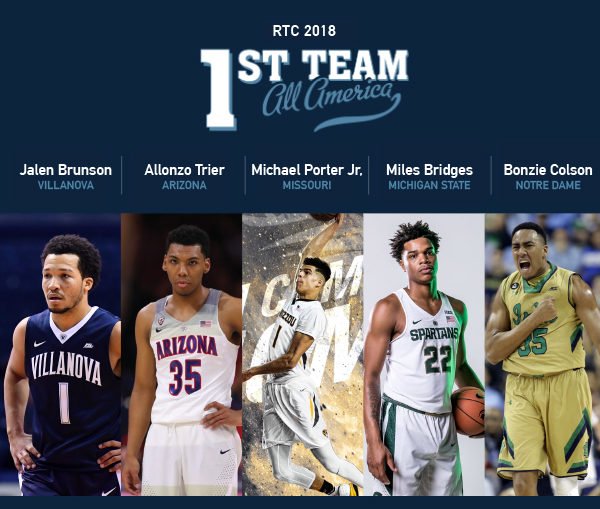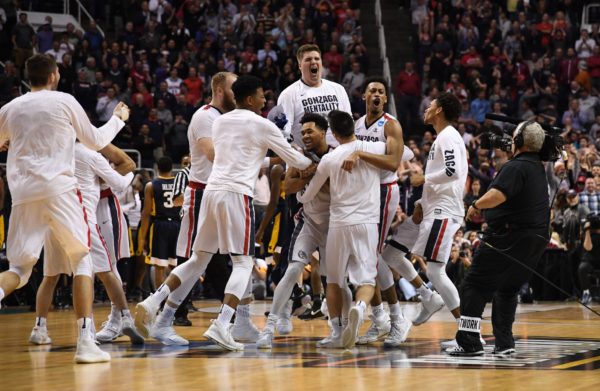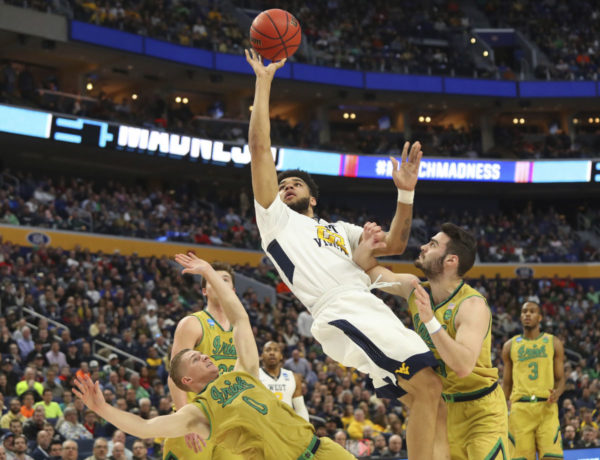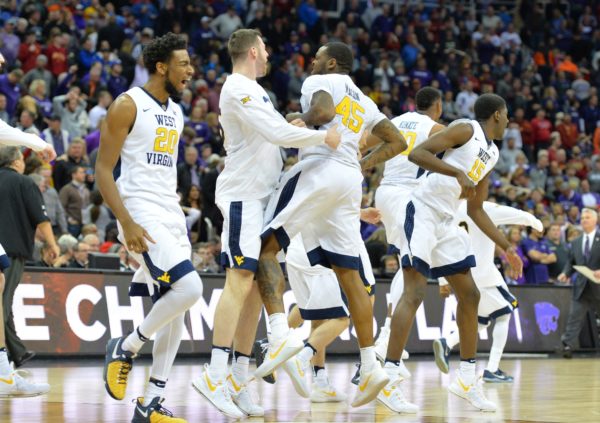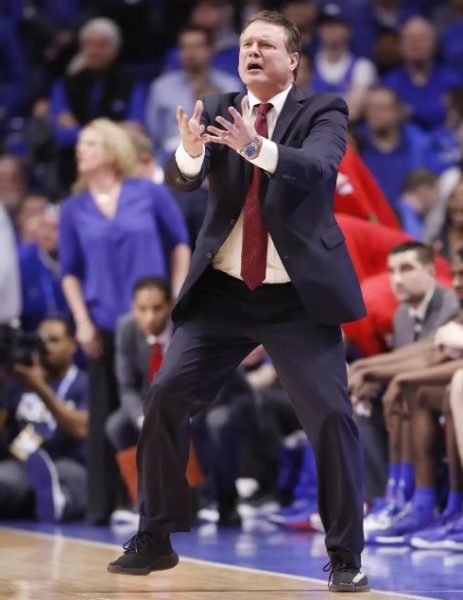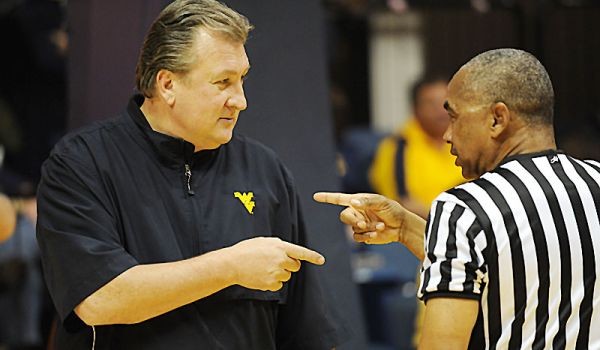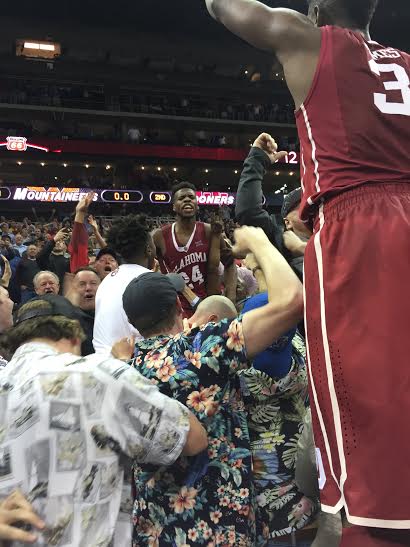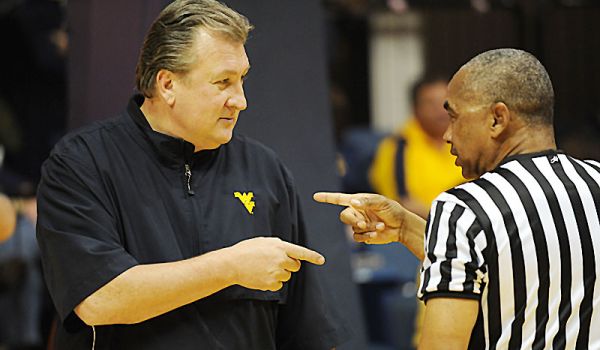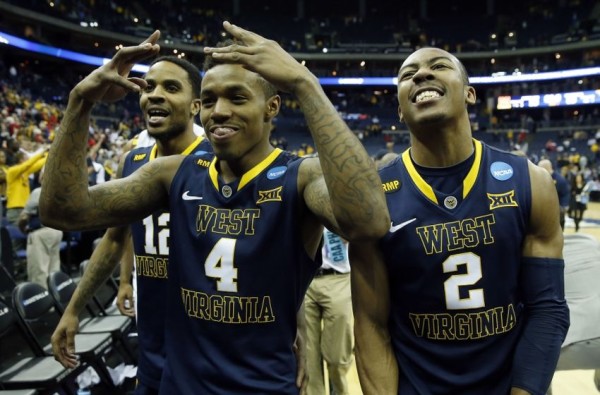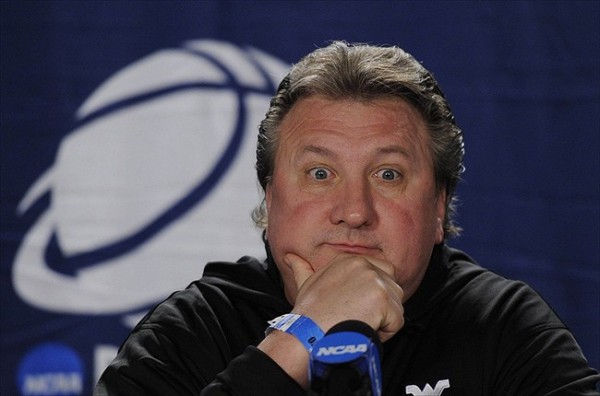Introducing the RTC Preseason All-America Teams
Posted by Walker Carey on November 8th, 2017With the season tipping off on Friday, there’s no better time to roll out our 2017-18 RTC Preseason All-America Teams. More than anything, these three groups of outstanding players are here to foster and encourage discussion over the next four months. Our crack panel of 10 writers provided their ballots over the last week and this is where we ended up.
First Team All-Americans
- Jalen Brunson, Villanova – There are few things more daunting in college basketball than a talented team with a heady, veteran playmaker at the point guard position. Brunson certainly fits that bill, as he enters the season with great expectations following a sophomore campaign where the point guard earned unanimous all-Big East honors while averaging 14.7 points and 4.1 assists per game. Villanova is the preseason favorite to win the Big East title — and if that prediction comes true, it will be Brunson’s third in three years running the show for Jay Wright’s squad. Factoid: Many players with Brunson’s pedigree would at least test the NBA Draft waters either after their freshman or sophomore seasons, but Brunson is different, stating, “The NBA is not going anywhere. I can wait. I can still get better. I can still get my degree. That’s the approach I had. I talked it over with my parents, and they’re just 100 percent fully supporting me. So that’s where I am.”
- Allonzo Trier, Arizona – Arizona experienced some offcourt drama late in the offseason when longtime assistant Book Richardson was arrested by the FBI on charges of bribery, corruption, conspiracy, and fraud stemming from improper conduct on the recruiting trail. That news figures to overshadow much of Arizona’s early season — which is a real shame, as the Wildcats are projected to be among the nation’s best teams. A major reason for that is the return of Trier for his junior year. The talented wing returned from a 19-game performance enhancing drug suspension during his sophomore season to lead the Wildcats to the Pac-12 regular season and tournament titles. Many were surprised when Trier opted to return to Tucson in lieu of entering the NBA Draft, but he has acknowledged that last season’s suspension definitely factored in his decision to come back to school. Factoid: Trier was the subject of a New York Times Magazine feature when he was in sixth grade that highlighted his precocious basketball ability at a young age with an introduction to the AAU scene.
- Michael Porter Jr., Missouri – A coaching change can often make a massive difference in a program’s fortunes. That was definitely the case with Missouri when the Tigers fired Kim Anderson in March after an underwhelming tenure and replaced him with Cal’s Cuonzo Martin, a coach who has long enjoyed a sterling reputation for his ability to recruit at a high level. Martin hiring paid off almost immediately when he secured the services of Porter, who was listed by 247Sports as the third-best player in the Class of 2017. The 6’10” forward will provide Missouri with scoring on the wing and has the versatility to defend a variety of positions. The Tigers are projected as one of the most improved teams in the country — and with Porter now in the fold, it will be intriguing to see just how far they can advance in the postseason. Factoid: It is a family affair for the Porters in Columbia this year, as Michael Porter, Sr. is an assistant coach, Jontay Porter reclassified to play with his brother, sisters Bri and Cierra Porter play for the women’s team, and aunt Robin Pingeton is the head coach of that women’s team.
- Miles Bridges, Michigan State – Michigan State was the recipient of one of the best offseason surprises when the sure-fire lottery pick Bridges decided to return to East Lansing for his sophomore year. Once the national shock of the decision wore off, it became clear the Spartans would be one of the teams to beat in college basketball this season. Bridges will look to build on a terrific freshman year where he averaged 16.9 points and 8.3 rebounds per game. With a strong supporting cast in tow and uncertainty with many teams in the Big Ten, the star sophomore should lead the Spartans to a prosperous season on both the conference and national landscapes. Factoid: Like most of us, Michigan State coach Tom Izzo assumed Bridges would be a one-and-done player, going so far as to joke about how Bridges will have to carry bags this year as an NBA rookie. In response, Bridges may have hinted at his ultimate decision by questioning, “Coach, why you always trying to get rid of me?”
- Bonzie Colson, Notre Dame – It is not a stretch for anyone to reference Colson as the most unique player in college basketball. After a turn as a significant role player on Notre Dame’s Elite Eight teams in 2015 and 2016, Colson became The Man in South Bend during his junior season. Standing at just 6’6″, Colson was the only ACC player last year to average a double-double — 17.5 points and 10.2 rebounds per game. Notre Dame currently finds itself in one of the most successful stretches the program has ever had, and with the talented and experienced Colson as its go-to guy, look for the Irish to continue that run this season. Factoid: Throughout Colson’s career, he has stayed true to two beliefs: play hungry and stay humble. The ACC Preseason Player of the Year vows that will not change as he enters his senior season as one of the country’s top players.





























